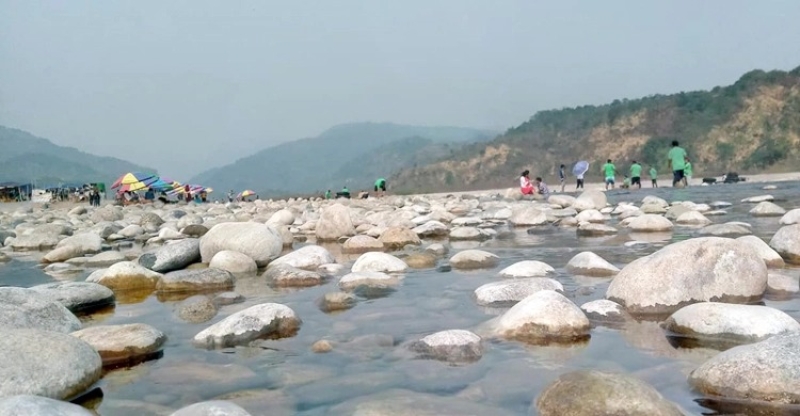- Intimidation or bloodshed cannot halt Bangladesh’s march to democracy |
- Khaleda Zia integral to an important chapter in BD history: Yunus |
- Enthusiasm marks Victory Day celebrations across Bangladesh |
- Dhaka-Delhi ties deep; to be shaped by trust, dignity, mutual respect |
- EU deploys election observation mission to Bangladesh |
Jafflong’s White Stones: A Scenic Heritage Plundered

Sada Pathor (white stone) area of Bholaganj, Sylhet. Photo collected._11zon
The theft of white stones from the Jafflong area in Sylhet is not merely a case of criminal looting—it is a brazen assault on one of Bangladesh’s most cherished natural treasures. With an estimated Taka 2 billion worth of stones illicitly extracted and crushed, the scale of devastation is staggering. What was once a pristine landscape of shimmering white stone beds nestled against the backdrop of the Khasi hills now bears the scars of greed, impunity, and environmental neglect.
Jafflong has long been a magnet for tourists, drawn by its ethereal beauty and the cultural vibrancy of the indigenous communities who call it home. But this allure is now under threat. The joint recovery operation by the Army and Police—though commendable—has yielded only a fraction of what was stolen. About 200 trucks of stones have been retrieved, yet the damage runs deeper than numbers can convey. Environmentalists rightly question whether the scenic grandeur of Jafflong can ever be restored.
What makes this tragedy even more alarming is the alleged involvement of influential business and political figures. When those entrusted with public service become complicit in environmental plunder, it signals a systemic failure. Reports suggest that leaders of certain political parties have even lobbied for the withdrawal of bans on stone collection from quarries, further muddying the waters between legitimate resource use and exploitative extraction.
Historically, stone collection in Jafflong has been a time-honored practice. Flash floods from the Indian hills carry stones into the region, and locals have long harvested them sustainably. This cultural and ecological nuance must inform any restoration effort. The local administration, while working to rehabilitate the area, must distinguish between traditional practices and industrial-scale looting. Blanket bans without community consultation risk alienating those who have lived in harmony with the land for generations.
Restoration must go beyond cosmetic fixes. It requires a bold commitment to accountability, ecological rehabilitation, and community engagement. The perpetrators—no matter how powerful—must face justice. The stone mills that processed the stolen materials must be investigated, and their operations scrutinized. Moreover, a transparent mechanism should be established to monitor future resource collection, ensuring it aligns with environmental sustainability and local livelihoods.
Jafflong is more than a tourist spot—it is a symbol of Bangladesh’s natural heritage and resilience. To allow its beauty to be buried under crushed stone and political complicity would be a betrayal of that legacy. One must make a difference. And that difference begins with the courage to confront power, protect nature, and honor the traditions that have shaped this land.

